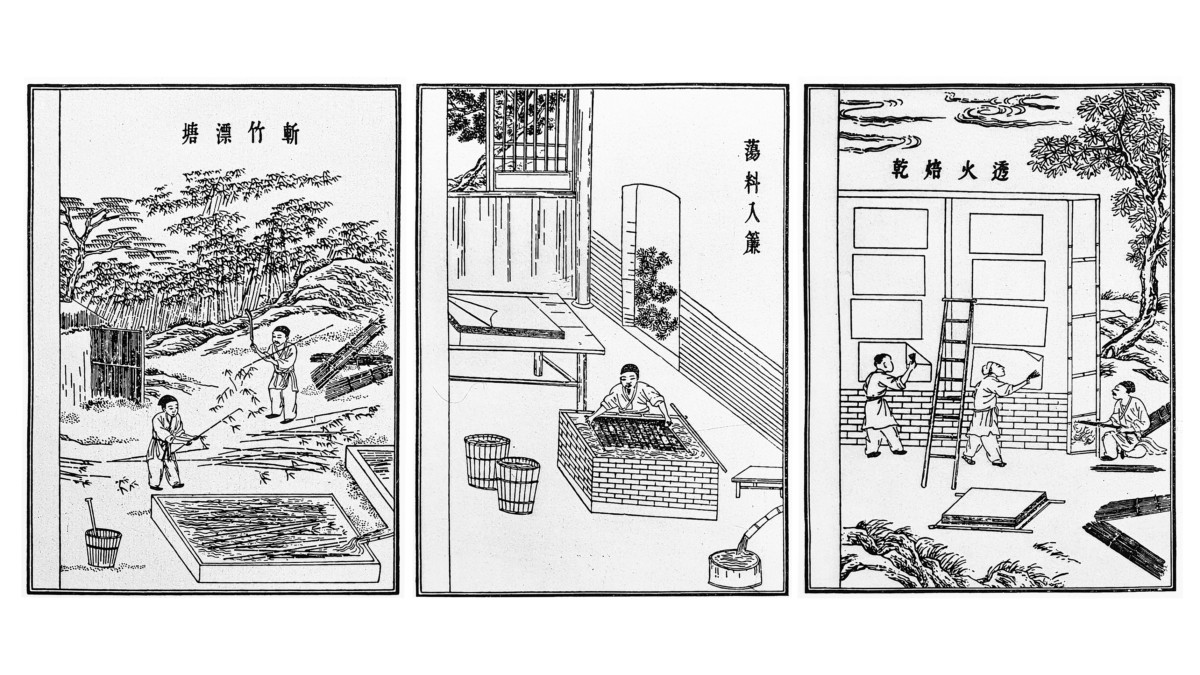Papermaking Process as Outlined by Cai Lun in 105 CE
Some of the volumes about book history are marvelous samples of book craft themselves. That’s the case with the work of German manufacturer and researcher of paper Armin Renker Das Buch vom Papier.
One of the best works on the history of the production of paper (as recognized by many specialists) is printed on sheets of laid paper, with additional inclusions of different illustrations a variety of sorts of paper from Germany and other countries.
Even the cover with its laid paper pattern and a gilded filigrain initial P continues to amaze me each time I take the book in my hands.
I’d be glad to share the book with you, but even while it was published in the 1930s, it is still copyrighted since the author has died less than 70 years ago in 1961. However, there are some elements of the book that predate it and that could be shared.
Here are several Ming dynasty (1368–1644) woodcuts showing five major steps in the ancient Chinese papermaking process as it was outlined by Cai Lun in 105 CE:
Cai Lun ([tsʰâi lwə̌n]; 蔡伦; CE 48– 121), was a Chinese eunuch, inventor, and politician of the Han dynasty (206 BCE–220 CE). For a long time, he was supposed to be the inventor of paper and the papermaking process. However, as Joseph Needham showed in 1985, a material similar to modern paper was produced in China at least 150-200 years before the Cai Lun’s birth. In any case, Cai Lun was responsible for significant improvement and standardization of papermaking.
Please Support us on Patreon!
 The minimum level of contribution is only $1 per month.
The minimum level of contribution is only $1 per month.
Moreover, starting with the pledge level of $3, you will get a digitized vintage book about bookbinding, book history, or book arts each month from us!
These pledges help iBookBinding to continue its work and bring more information about bookbinding and book arts to you!










